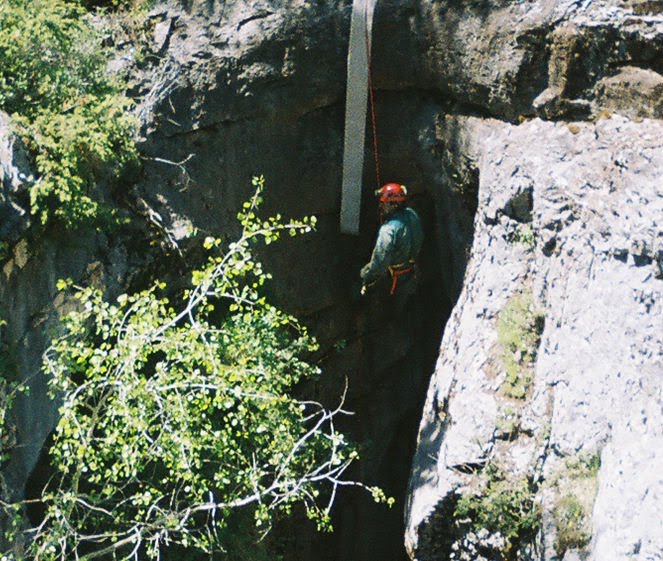Climbing ropes are available in two basic configurations. There are static ropes and dynamic ropes. Do not confuse the two different types of rope! Once a rope is purchased, one should mark the rope accordingly. It is difficult to distinguish between the static and dynamic ropes just upon visual inspection.
I generally mark my ropes in the following manner. I use to two colors of shrink tubing. Shrink tubing is a plastic tube that shrinks when heated. I slide a white piece if tubing onto the ends of the rope. I use a heat gun or similar tool to shrink the tube down tightly on the rope. Then I mark on the tubing the date the rope was purchased, the type of rope, and the length. Then I take a clear piece of tubing and slide it over the white piece and shrink it down tight over the first piece. This keeps the markings from rubbing off and makes it easily identifiable.
Static rope is designed to be used for rappelling into a pit or off the edge of a drop. It is generally used with a rope descender system and is NOT used to catch a fall. If one falls using a static rope one can rick injury or even death. Static ropes do not stretch. They are more abrasion resistant but will not protect against shock loads. Static ropes are mainly used in the caving environment, technical climbing and for rescue purposes.
Dynamic ropes ARE stretchable. They are used for general climbing and will absorb a shock load. They are designed for belaying and will absorb the shock of a falling climber. They reduce the chance of injury on the climber, belayer and any equipment used. Think of dynamic ropes as life safety ropes.
Take care of your ropes. They need to be washed if they have gotten extremely diry of muddy. The grit in dirt and mud acts as sand paper an can quickly destroy the rope's construction. Put them away dry and clean and they will last much longer.
I will talk about rope washing techniques in an future article.
Thursday, December 17, 2009
Subscribe to:
Post Comments (Atom)


No comments:
Post a Comment